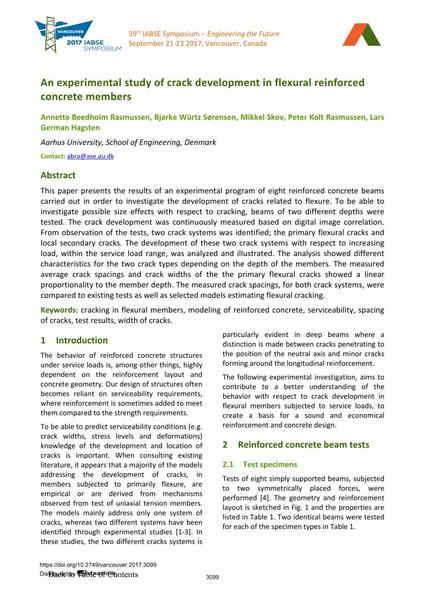An experimental study of crack development in flexural reinforced concrete members

|
|
|||||||||||
Détails bibliographiques
| Auteur(s): |
Annette Beedholm Rasmussen
(Aarhus University, School of Engineering, Denmark)
Bjarke Würtz Sørensen (Aarhus University, School of Engineering, Denmark) Mikkel Skov (Aarhus University, School of Engineering, Denmark) Peter Kolt Rasmussen (Aarhus University, School of Engineering, Denmark) Lars Germa Hagsten (Aarhus University, School of Engineering, Denmark) |
||||
|---|---|---|---|---|---|
| Médium: | papier de conférence | ||||
| Langue(s): | anglais | ||||
| Conférence: | IABSE Symposium: Engineering the Future, Vancouver, Canada, 21-23 September 2017 | ||||
| Publié dans: | IABSE Symposium Vancouver 2017 | ||||
|
|||||
| Page(s): | 3099-3106 | ||||
| Nombre total de pages (du PDF): | 8 | ||||
| Année: | 2017 | ||||
| DOI: | 10.2749/vancouver.2017.3099 | ||||
| Abstrait: |
This paper presents the results of an experimental program of eight reinforced concrete beams carried out in order to investigate the development of cracks related to flexure. To be able to investigate possible size effects with respect to cracking, beams of two different depths were tested. The crack development was continuously measured based on digital image correlation. From observation of the tests, two crack systems was identified; the primary flexural cracks and local secondary cracks. The development of these two crack systems with respect to increasing load, within the service load range, was analyzed and illustrated. The analysis showed different characteristics for the two crack types depending on the depth of the members. The measured average crack spacings and crack widths of the the primary flexural cracks showed a linear proportionality to the member depth. The measured crack spacings, for both crack systems, were compared to existing tests as well as selected models estimating flexural cracking. |
||||
